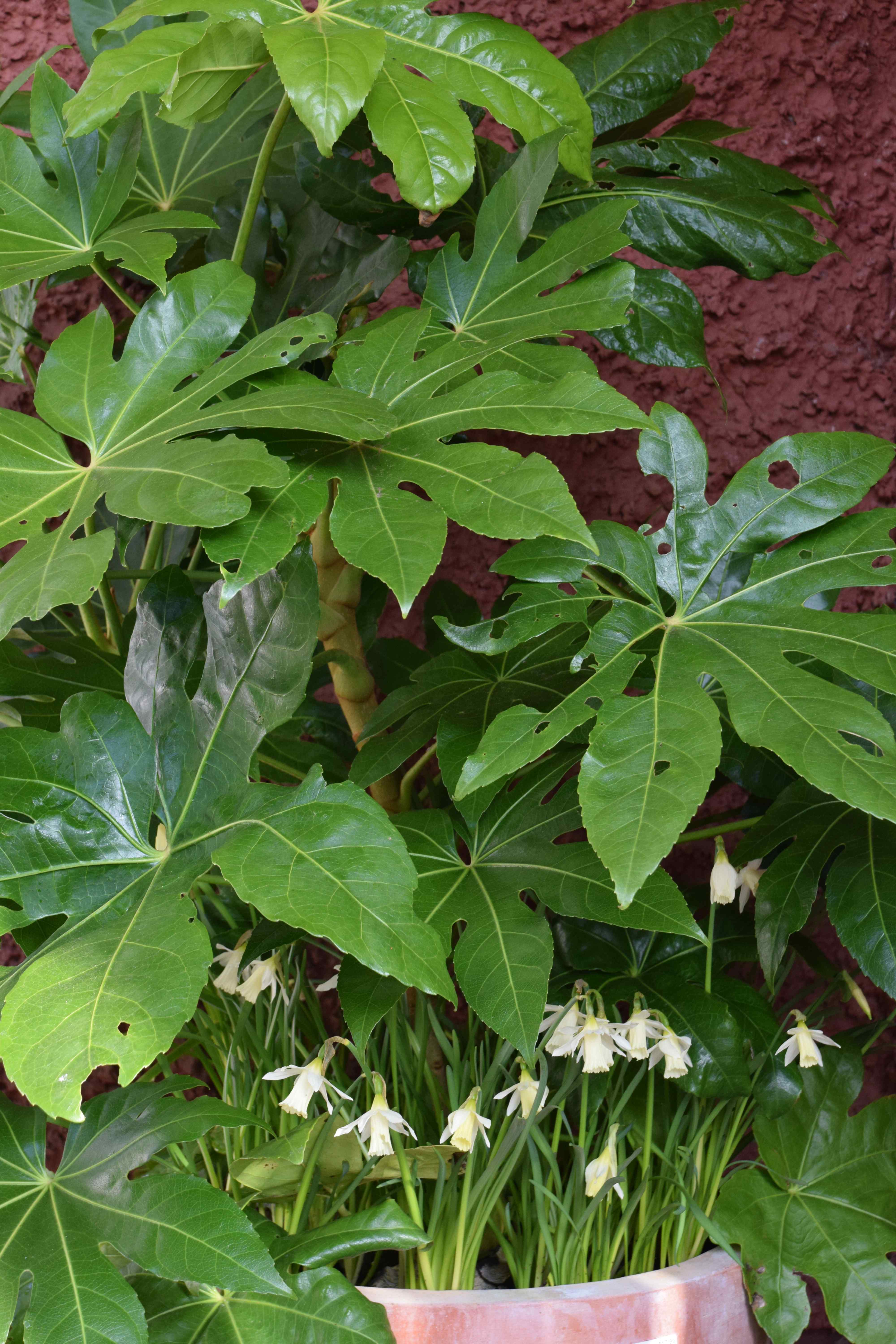
When I was working at Nags Hall in the 80s the selection of houseplants was far smaller than it is now. Orchids were certainly not as widely available and African violets were the order of the day if you wanted colour in the home, unless you were content with a potted chrysanthemum. Of course, with Christmas on the horizon it was time to think about poinsettias and cyclamen.
The old greenhouses at Nags Hall were packed with growing plants. After being stuffed full of bedding plants in spring there was a slight lull in summer until some were planted with chrysanthemums for cut flower in the run up to Christmas while in another we grew cyclamen for Christmas. At this time the mini-cyclamen we use for autumn pots had not been bred and we all looked forward to potted plants for indoor display.
Brian Knight was always proud of his cyclamen and they took a lot of work. We had to water them carefully so that water did not get between the leaves and they were grown cool so that the plants were compact and sturdy. Brian would turn the plants over (before flower buds appeared, of course) and stand them upside down to show how sturdy they were – just like Mary Berry inverting her bowl of meringue!
But back to the houseplants. Fatsia japonica (often called the false castor oil plant) was sold as a houseplant and, inappropriately, as tiny seedlings among the ‘tot’ plants. These were tiny plants sold for bottle gardens – just the right size to drop through the narrow neck of glass bottles. Terrariums and bottle gardens are enjoying huge popularity right now but they are nothing new – they were the height of fashion in the 80s.
For some reason fatsias were regarded as not hardy – and winters were ( or could be) harsher then. But I was aware that they were hardy. I had a Sunday morning gardening job, working for Elizabeth Christie who some of you may have known, near Old Oxted and she had a huge clump of fatsia in her garden, at least 2m high and across, growing in full sun.
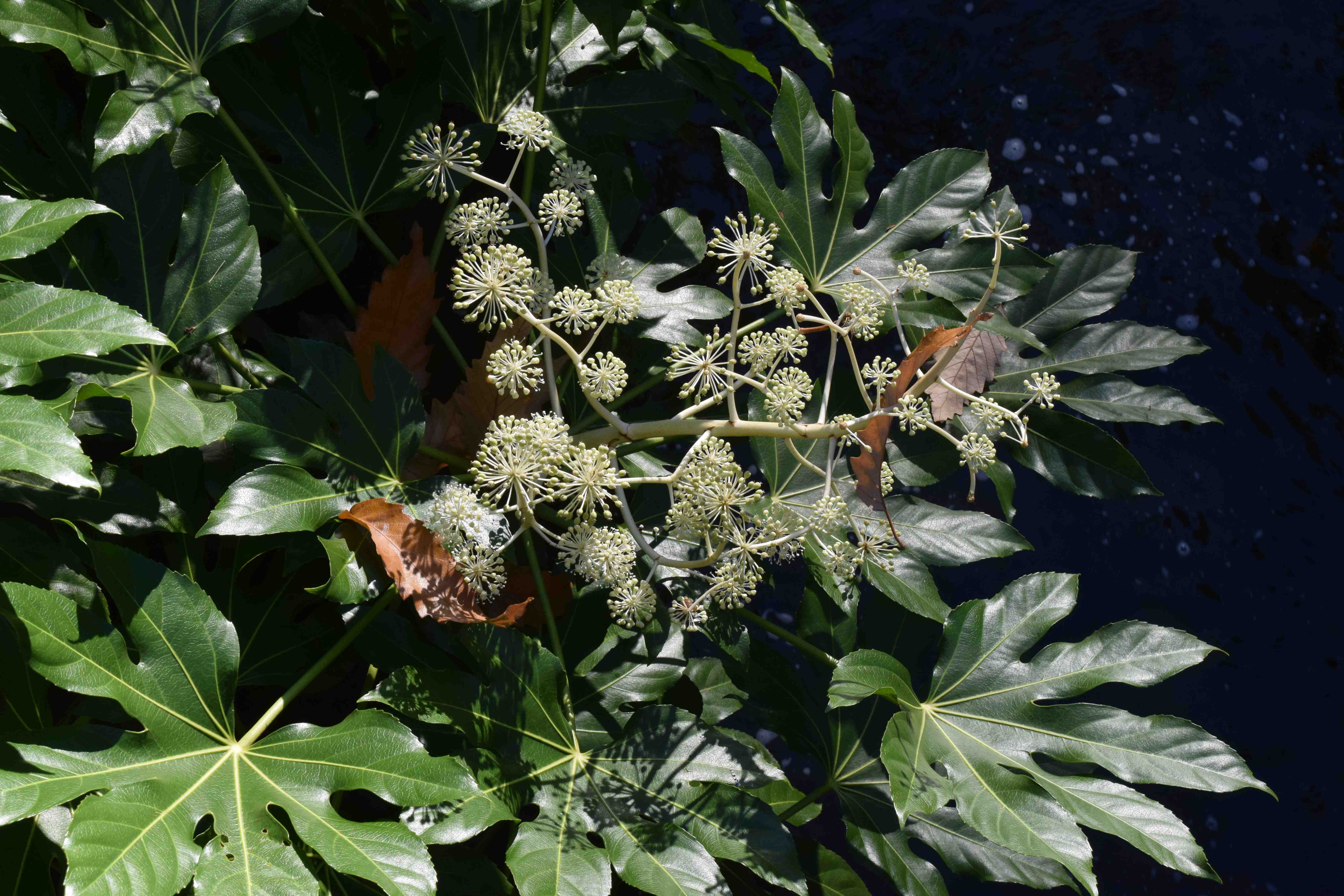
Since those days I have come to admire and rely on this magnificent evergreen, that has some of the best leaves of any evergreen. As a houseplant it has its problems. If too warm it gets spindly and drawn and, along with its relative ivy (hedera) it suffers terribly from dry atmosphere and red spider mite in the home. It is best in a cold room or in a sheltered spot outside and it is the first plant you should choose for pots on a shady patio.
You can buy fatsias as outside plants or in the houseplant section. Both can be grown outside but plants bought as houseplants will be very ‘soft’ and will need to be acclimatised to outside conditions.
There they will thrive in shade or part shade. In sun they will not be such a rich green and can be lime green – it is not a huge problem to the plant, it just isn’t quite as attractive. They are hardy in all but the worst winter but it is worth choosing a sheltered spot. Overhead branches offer protection from blistering sun and from late spring frosts which can damage precocious new growth. My own plant had all its new growth killed by a hard frost in mid May but it sprouted afresh.
Nothing looks better in a pot in shade and I like to underplant with daffodils. Just use John Innes No 3 compost.
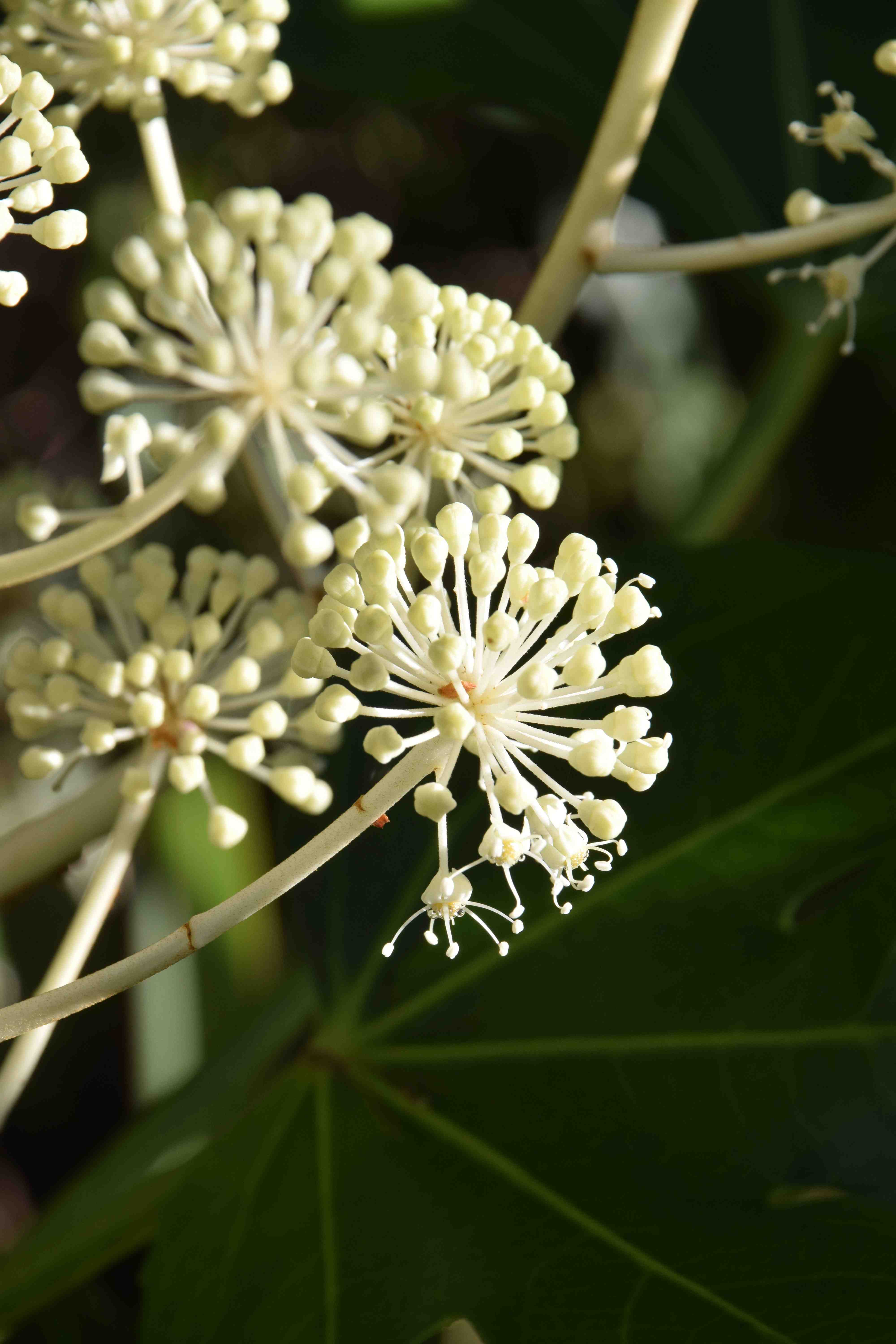
And while this is primarily a foliage plant, there is the bonus of white flowers in early winter. These are small but very attractive and they do provide nectar and pollen for late-flying insects.
In recent years the variegated ‘Spiders’ Web’ has been introduced. It is a popular Japanese cultivar and the leaves are spattered with white variegation. I am not sure if I like it or not but that hasn’t stopped me planting two in the garden – one in a shady border and another in a pot!
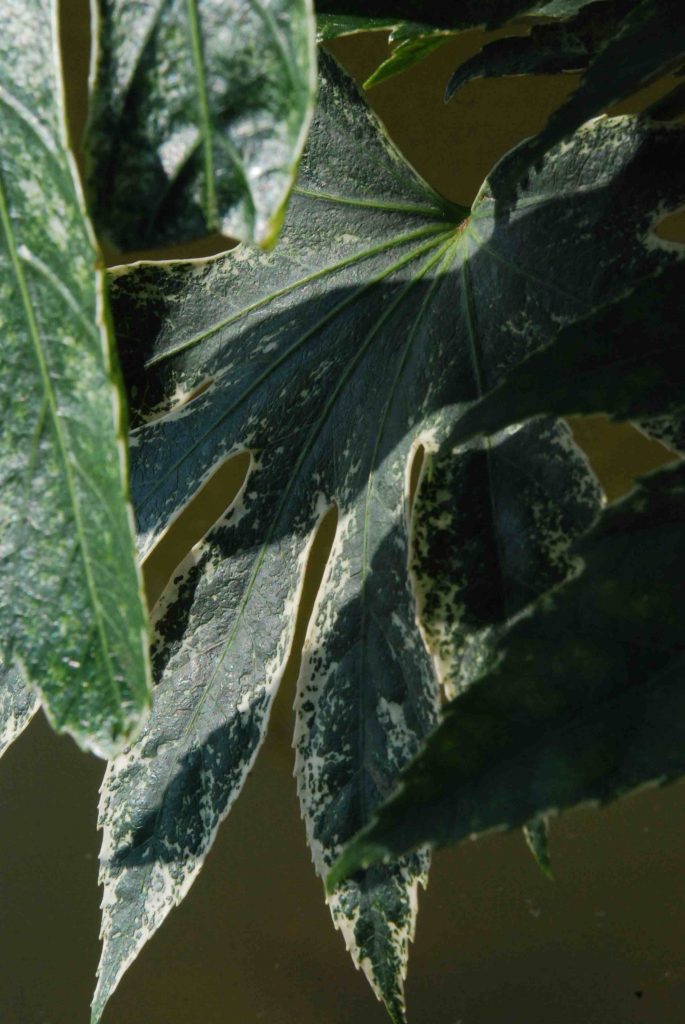
Jobs for the week
Christmas roses
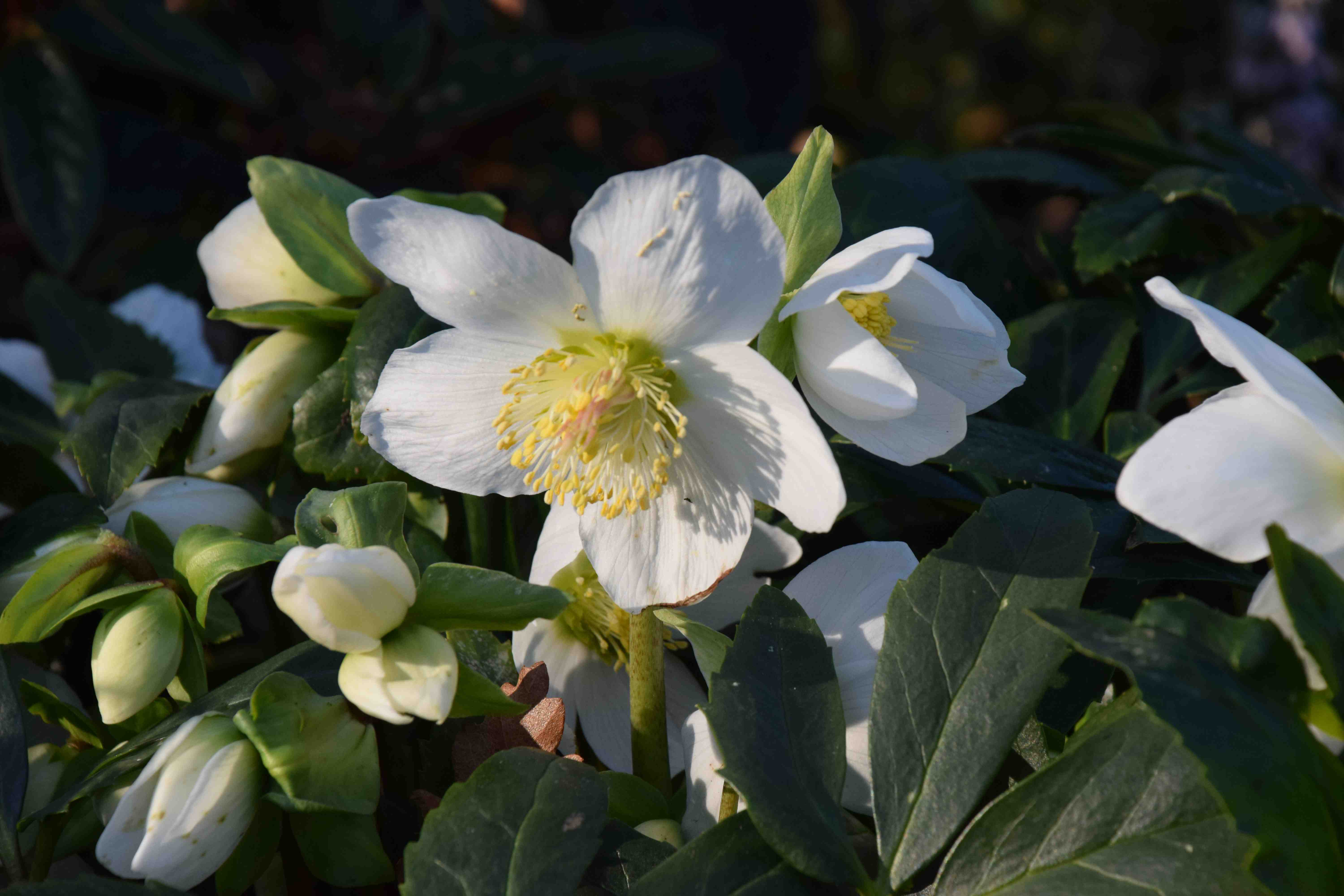
Christmas roses (Helleborus niger) have changed a lot in recent years. read books written in the 40s – 90s and they will describe how these hardy evergreens rarely bloom for the festive season. But now you can buy them in bloom in the run up to Christmas. My own plant in the garden (above) is starting to bloom. Think about adding them to your Christmas gift list when you can get to garden again. They make lovely plants for indoor display over the festive season, lasting best in a cool room, and can then be planted out into the garden. They are not quite as easy as the Lenten roses (H. x hybridus) and prefer a rich, humussy soil in part shade.
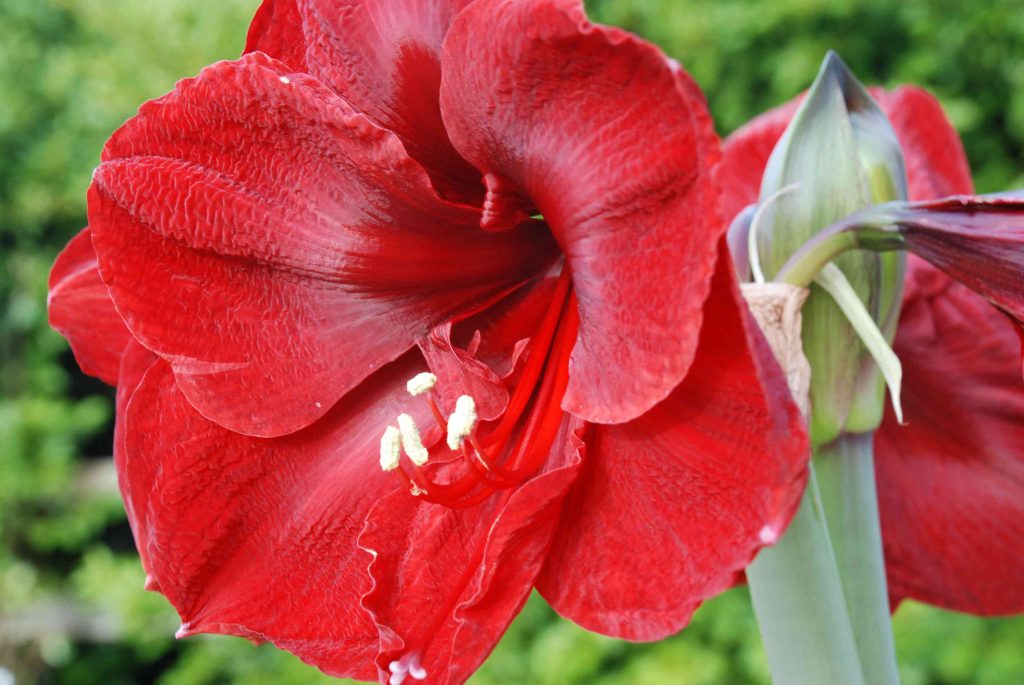
Hippeastrum
Another Christmas favourite, hippeastrum, better known as amaryllis, are quick and easy to grow. You can get fresh bulbs now and they will bloom within a few months if kept in a warm, bright spot. If you have plants from previous years they should bloom again provided you kept them growing and well fed through summer.
Lawns
If it is dry enough to work on the lawn, make the last cut when you can and clear leaves off the grass to prevent worms dragging them under ground. If left on the lawn they will also cause fungal diseases that can damage the lawn. Avoid walking on the lawn in frosty conditions, though wet is likely to be more of an issue this week.